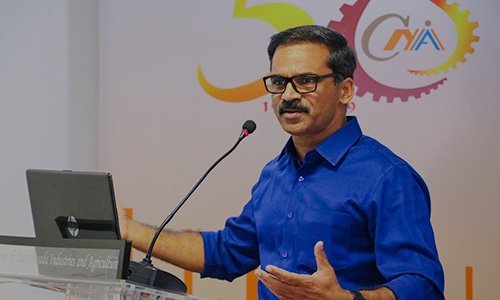World Environment Day: From Inherited Earth to Leased Future – How Will You Pay Your Rent?

As we mark another World Environment Day, it’s crucial to reflect on our collective responsibility toward the planet. We have inherited a magnificent Earth, abundant with natural beauty and resources, yet our actions today shape the legacy we leave for coming generations. Our planet is no longer just an inheritance; it has become a lease, and we must ask ourselves, “How will we pay our rent?”
Understanding Our Lease on Earth
World Environment Day reminds us that our relationship with the planet is not just one of ownership but of stewardship. This year’s theme highlights the urgency of environmental sustainability and calls for a global commitment to Earth conservation. As climate change accelerates and biodiversity dwindles, the question of how we can sustain our lease becomes ever more pressing.
The Impact of Climate Change
Climate change awareness has grown significantly in recent years, yet we are still grappling with its devastating effects. Rising temperatures, melting ice caps, and increasing natural disasters are stark reminders that our planet is distressed. The Intergovernmental Panel on Climate Change (IPCC) warns that these effects will only deteriorate without immediate action, leading to more severe weather events and irreversible damage to our ecosystems.
Embracing Eco-friendly Practices
To mitigate these impacts, adopting eco-friendly practices is essential. Simple actions like reducing plastic use, recycling, and conserving water can collectively make a substantial difference. For instance, consider the energy savings from switching to LED bulbs or the environmental benefits of composting organic waste. These small steps contribute to a larger goal of environmental sustainability.

Global Environmental Initiatives
Across the globe, numerous initiatives are spearheading the movement toward a more sustainable future. The Paris Agreement, for instance, is a landmark accord aimed at reducing greenhouse gas emissions. The United Nations’ Sustainable Development Goals (SDGs) also deliver a blueprint for achieving a better and more sustainable future for all. These goals encompass various aspects of environmental protection, from clean energy and climate action to life below water and life on land.
The Role of Renewable Resources
A critical component of these initiatives is the transition to renewable resources. Solar, wind, and hydroelectric power offer sustainable alternatives to fossil fuels, lowering our carbon footprint and preserving natural habitats. Investing in renewable energy not only addresses climate change awareness but also promotes energy independence and economic growth.
Practical Green Living Tips
On an individual level, green living tips can help us reduce our ecological footprint. Here are some steps you can take that are actionable:
- Reduce, Reuse, Recycle: Minimize waste by recycling materials and reusing items whenever possible.
- Sustainable Transportation: Opting for walking, cycling, or public transportation instead of driving promotes Sustainable Transportation.
- Energy Efficiency: Use energy-efficient appliances and reduce energy consumption by unplugging appliances when not in use.
- Water Conservation: Install low-flow fixtures and practice mindful water usage.
Biodiversity Preservation
Another critical aspect of environmental sustainability is biodiversity preservation. Healthy ecosystems are vital for a thriving planet, delivering essential services such as pollination, water purification, and climate regulation. Saving endangered species and their habitats is crucial for maintaining this balance. Efforts like reforestation, wildlife conservation, and habitat restoration are pivotal in safeguarding our planet’s biodiversity.

The Path to Sustainable Development
Balancing economic evolution with environmental conservation is essential as we navigate the complexities of sustainable development. The concept of a circular economy-where waste is minimized and resources are reused—offers a viable solution. By rethinking how we produce and consume goods, we can create a system that benefits both people and the planet.
Paying Our Rent: A Call to Action
Paying our rent to the Earth means taking assertive steps to confirm its health and longevity. Here are some methods through which you can contribute to the cause:
- Educate and Advocate: Raise awareness regarding environmental issues and advocate for policies that promote sustainability.
- Support Sustainable Brands: Choose products from firms that prioritize ecological responsibility.
- Participate in Community Initiatives: Join local clean-up efforts, tree planting events, and conservation projects.
- Reduce Carbon Footprint: Implement practices in your daily life to reduce your carbon emissions, such as carpooling and energy conservation.
Conclusion
World Environment Day is not only a date on the calendar; it is a call to action. It is a reminder that the Earth we inherit is a precious gift, and our duty is to protect and preserve it. By embracing environmental sustainability, promoting Earth conservation, and fostering climate change awareness, we can pay our rent and secure a healthier, more sustainable future for all.
Let us all take a moment to reflect on our impact and commit to making a positive change. Together, we can develop a world where nature and humanity coexist in harmony.
Read Our Latest Blog: The Hathras Case: Strategies for Effective Crowd Management to Prevent Stampedes

Quitters Don’t Win and Winners Don’t Quit.
Ironman | Deccan Cliffhanger | Comrade Legend Finisher | Motivational Speaker | Writer | Endurance Athlete





